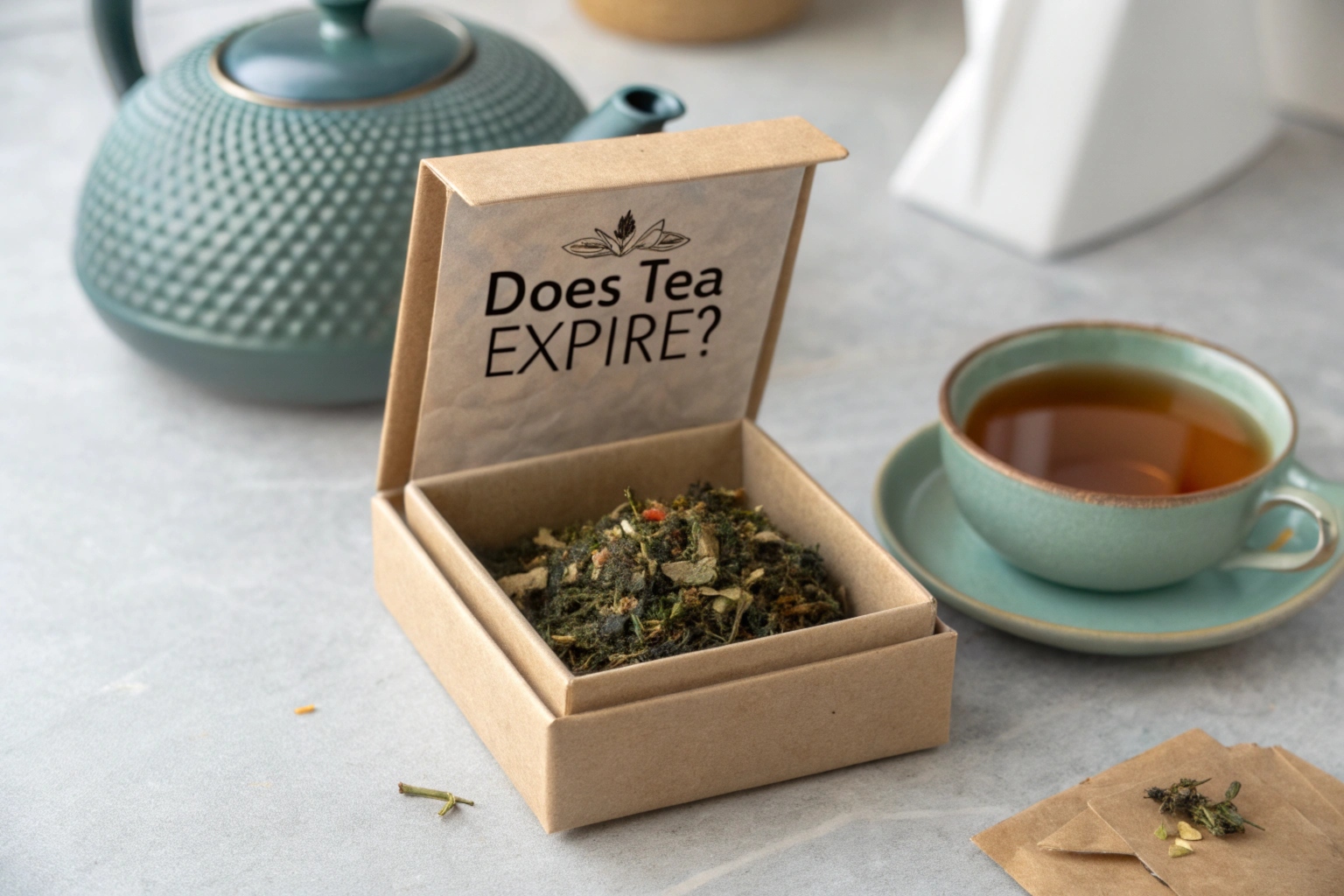Tea is one of the most popular beverages in the world, cherished for its nuanced flavors, diverse types, and cultural significance. Whether you prefer black tea, oolong tea, or herbal infusions, understanding the shelf life of tea is essential to enjoying its pristine quality. If you’re wondering, “does tea expire?”, this guide explores everything from the shelf life of different tea varieties to proper storage techniques and safety considerations.
Shelf Life of Different Tea Varieties
The longevity of tea varies based on the type of tea and its processing. Here’s an overview of how long different varieties typically last:
Loose-Leaf Tea
Loose-leaf tea, known for its vibrant color and richer flavor, typically has a shelf life of 6-12 months if stored properly. High-quality loose-leaf teas maintain their aromatic qualities and flavor notes distinct for longer, but improper storage can lead to a decrease in quality over time.
- Factors Influencing Shelf Life: Fresh leaves and broken leaves differ in longevity. Fresh tea leaves, with minimal exposure to air and moisture, retain their aroma and nuanced flavors longer than processed or broken leaves.
- Optimal Storage: Airtight containers and cool, dark environments help preserve the characteristic aroma and flavor over time.
Tea Bags
Tea bags generally have a shorter shelf life compared to loose-leaf tea. Due to the fine tea leaf particles used in tea bags, they are more susceptible to flavor alteration and aroma loss. The typical shelf life for tea bags is 6-8 months.
- Concerns: Storing tea bags near strong-smelling items can lead to flavor alteration, while exposure to air and light accelerates their degradation.
- Best Practices: Use air-tight containers or ceramic containers to keep tea bags fresh for longer.
Herbal Tea
Herbal teas, made from dried herbs, fruits, or flowers, have varying shelf lives depending on their ingredients. On average, herbal teas maintain their quality for 6-12 months.
- Challenges: Herbal teas lose their vibrant color and aroma faster due to the absence of caffeine and polyphenolic compounds that protect tea leaves.
- Storage Tips: Keep herbal teas in airtight containers away from moisture and heat sources to slow the oxidation process.
Aged Teas (Pu-erh, White, Oolong)
Some teas, like aged oolong teas or pu-erh, improve with time due to a natural fermentation process. These teas can last for years or even decades when stored under optimal tea storage conditions.
- Types:
- Dark Oolongs and Roasted Oolongs: Known for their nutty flavor and richer profile, these teas age well.
- Greener Oolongs: These teas are less suitable for aging and have a shorter shelf life.
- Pu-erh Teas: With hardier varieties, pu-erh can develop unique flavor profiles through aging.
- Storage Advice: Avoid exposure to light and keep teas in a cool, dry place to support their chemical and microbial growth processes.
Signs of Expired Tea
Recognizing when tea has expired is crucial for maintaining its quality and avoiding a bitter taste or altered flavor. Here are the key indicators:
Changes in Appearance
- Visual Clues: Expired tea may show discoloration, such as a darker color or loss of vibrant color. Mold or strange growths may also indicate spoilage.
- Tea Bags: Inspect tea bags for signs of tears or a dull, dusty appearance.
Loss of Aroma
Aroma is a hallmark of quality tea. When tea loses its characteristic aroma or develops funny smells, it is a sign that the tea is no longer fresh.
- Specific Signs: Bright aroma and aromatic qualities fade over time due to exposure to light and air.
- Solution: Proper storage techniques can help preserve the aroma of tea for longer.
Altered Flavor
Tea’s flavor profile becomes flat or bitter as it ages. Nuanced flavors diminish, leaving behind a less enjoyable taste.
- Taste Test: Brew a small amount of tea to check if the original flavor is intact. If the tea has a bitter taste or no body in taste, it may be past its prime.
Factors Affecting Tea Freshness
Exposure to Air
Airflow accelerates the oxidation process, diminishing tea’s flavor notes and aromatic compounds.
- Prevention: Use airtight containers or mason jars with secure lids to minimize air exposure.
Effect of Light
Ambient light and exposure to light degrade the quality of tea over time, particularly for delicate teas like white tea and greener oolong teas.
- Protective Measures: Store tea in ceramic containers or other opaque storage containers to block light.
Influence of Moisture
Moisture can lead to accelerated fermentation processes or even microbial growth.
- Tips: Always ensure storage containers are dry and avoid storing tea near heat sources or in humid environments.
Proper Storage Techniques
Airtight Containers
Using airtight containers, such as mason jars or specialized tea containers, is the best way to maintain tea quality over time.
- Materials: Glass jars, plastic containers, and ceramic containers are popular varieties, but ceramic is often preferred for optimal tea storage.
Cool and Dark Environments
Storing tea in a cool, dark place prevents exposure to heat and light, which degrade tea’s flavor profiles.
- Examples: Pantry shelves or dedicated tea storage cabinets work well.
Avoiding Humidity
Humidity poses a significant risk to tea freshness.
- Solutions: Keep tea away from water sources, and avoid placing it near strong-smelling items or areas prone to high humidity.
Safety of Consuming Expired Tea
Health Risks
Expired tea is unlikely to cause severe health issues but may have reduced beneficial antioxidants and activities of antioxidants.
- Microbial Concerns: In rare cases, strange growths or mold can develop, which can lead to mild gastrointestinal discomfort.
Best Practices for Old Tea
- Repurposing: Use old tea for purposes other than drinking, such as composting, cleaning, or skincare routines.
- Brew Test: If tea passes a taste test and has no funny smells, it may still be safe for consumption.
Frequently Asked Questions
Differences Between Loose-Leaf and Bagged Tea
Loose-leaf tea generally has a longer shelf life and maintains its nuanced flavors better than tea bags due to its larger, less processed leaves.
How to Tell if Tea is Still Good
Check for vibrant color, characteristic aroma, and intact flavor profiles. A brew test can confirm whether the tea retains its original flavor.
Can Expired Tea Still Be Used?
Yes, expired tea can often be repurposed for non-drinking uses, such as odor absorption or as a natural fertilizer in gardens.
Understanding the nuances of tea shelf life, proper storage, and the signs of expired tea ensures you can enjoy every cup to its fullest. Whether you’re a casual tea drinker or a devoted tea lover, these tips will help you maintain the quality of your tea collection for years to come.
Read also: How much caffeine in a shot of espresso

